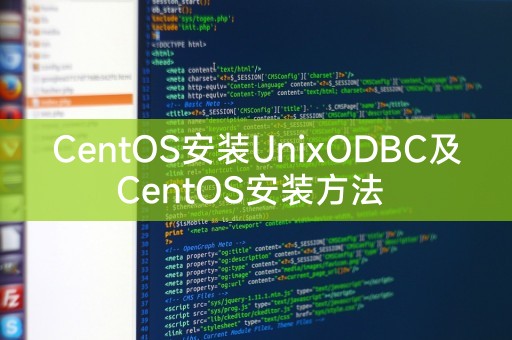
php editor Xiaoxin provides you with a detailed tutorial on installing UnixODBC on CentOS and the CentOS installation method. UnixODBC is an open source ODBC driver manager that allows CentOS systems to connect and interact with various databases. In this article, we will introduce you how to install UnixODBC on CentOS systems, and provide detailed steps and operation guides to allow you to easily complete the installation process. Whether you are a beginner or an experienced developer, this article will provide you with practical tips and suggestions to help you quickly master how to install UnixODBC on CentOS.

UnixODBC is an open source ODBC driver manager that provides a unified interface to connect and manage different databases. The following are the steps to install UnixODBC on CentOS:
Before installing any software, we should always ensure that our system is up to date. You can update the CentOS system using the following command:
```
sudo yum update
Execute the following command to install UnixODBC:
sudo yum install unixODBC unixODBC-devel
After the installation is completed, we need to configure UnixODBC to correctly connect to the database. The configuration file is located in `/etc /odbc.ini` and `/etc/odbcinst.ini`, you can use a text editor to open these files and configure them accordingly.
The `odbc.ini` file is used to configure the data source. The following is the content of a sample configuration file:
[MySQL]
Description=MySQL ODBC Driver
Driver=MySQL
Server=localhost
Database=mydatabase
User=myuser
Password=mypassword
Port= 3306
This is a sample configuration to connect to a MySQL database, you can modify these parameters according to your needs.
The `odbcinst.ini` file is used to configure the ODBC driver. The following is the content of a sample configuration file:
Driver=/usr/lib64/libmyodbc5.so
Setup=/usr/lib64/libodbcmyS.so
FileUsage=1
This is a sample configuration to connect to a MySQL database, you need to modify the driver and setting path according to your actual situation.
After completing the configuration, you can use the following command to test the database connection:
isql -v data source name username password
For the above example configuration, you can use the following command Test:
isql -v MySQL myuser mypassword
If the connection is successful, some information about the database will be displayed.
In addition to using the yum command to install UnixODBC, you can also use other methods to install it.
The steps are as follows:
1. Download the UnixODBC source code package.
2. Unzip the source code package.
3. Enter the source code directory and execute the following command to compile and install:
./configure
make
sudo make install
If you are able to find the RPM package for your version of CentOS, you can install it using the following command:
sudo rpm -ivh package name.rpm
Installing UnixODBC on CentOS can help you Connect and manage various databases. Using the above methods, you can easily install UnixODBC, and configure and test database connections as needed. I hope this article will be helpful to you!
The above is the detailed content of CentOS installation UnixODBC and CentOS installation method. For more information, please follow other related articles on the PHP Chinese website!




